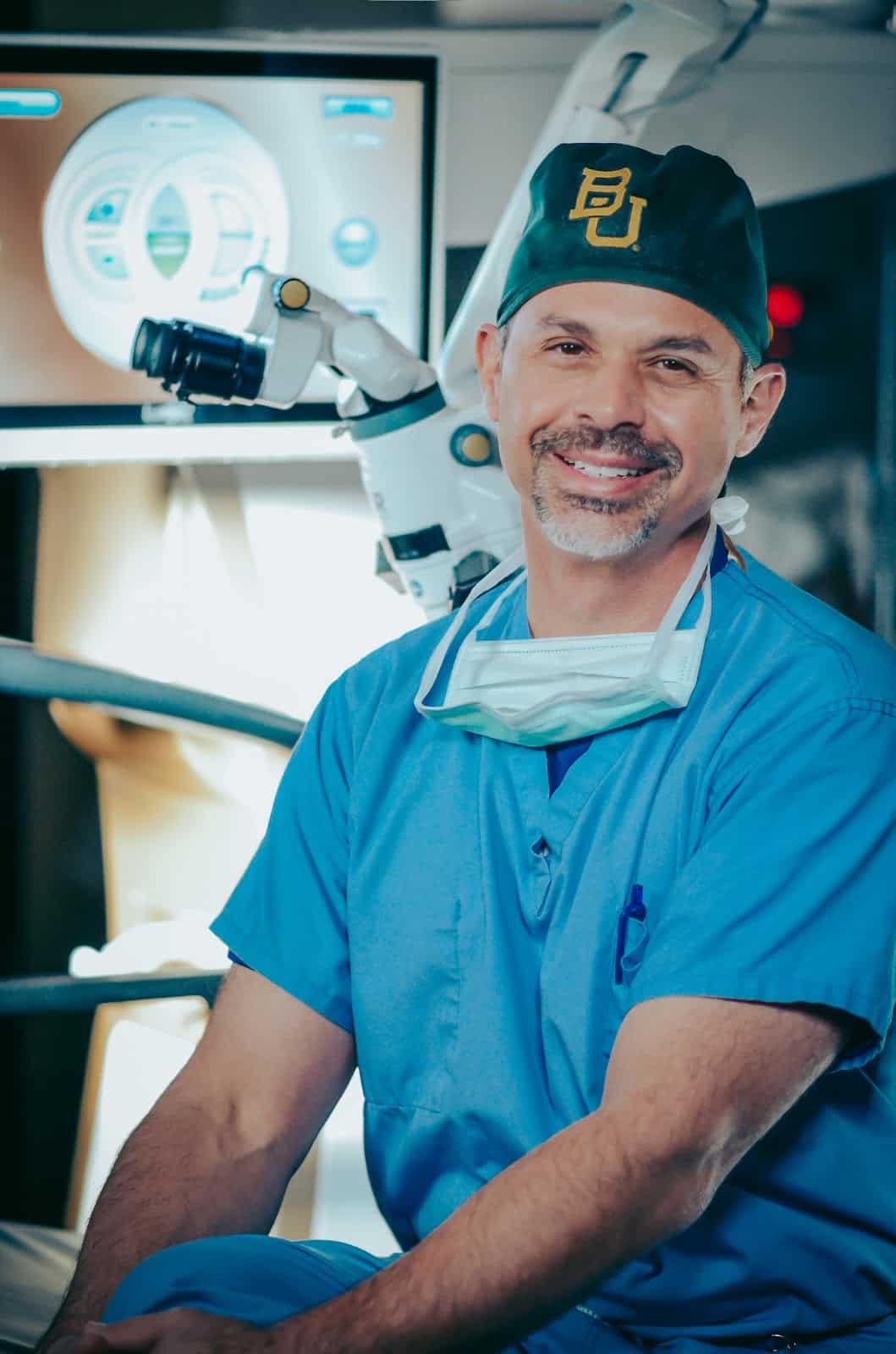
Cataract surgery is usually a 10-15 minute procedure to remove the cloudy lens inside the eye (cataract), and to replace it with a clear plastic lens. Learn more about cataracts here.
Before Your Surgery
About one hour before surgery, the patient is given several sets of dilating drops to expose as much of the cataract as possible. This makes the procedure much easier for the surgeon and safer for the patient. If you are on certain prostate medications, such as Flomax, please notify your surgeon at the Texas Vision & Laser Center before the day of surgery. Flomax can interfere with dilation and make the cataract procedure more complicated. However, your surgeon can take appropriate steps at the time of your surgery to correct for the effects this medication can have on your eyes.
Moments before surgery an effective anesthesia is given to the eye. In some instances this is even done in the operating room. Your doctors at the Texas Vision & Laser Center will determine the best method of anesthesia to give you the most comfortable experience during the procedure.
During Your Surgery
During the surgery, the patient is usually awake but sedated. The patient lies in a reclined position, under drapes, and only the eye having the procedure is left exposed. A bright light is shined on the eye and an eyelid holder is used to keep the eye open and to keep the eyelids from interfering. Two small incisions are made on the eye to allow access into the eye and then delicate steps are then taken to remove the cloudy lens. During this time an ultrasonic probe is used to shatter the lens. A vacuum is attached to this probe that removes all of the shattered particles. Most of the time patients hear this ultrasonic probe and vacuum. However, the patient will feel no pain or discomfort during the entire procedure. Once the cloudy lens is completely removed and all particles have been vacuumed away, the clear plastic implant is inserted and centered. The surgeon then seals the incision site, usually without the use of a stitch and antibiotic drops and a shield are placed on the eye. The patient is then taken to the recovery room for observation and thorough post-operative instructions.
After Your Surgery
Cataract surgery is done on each eye separately, on different days, usually separated by a week or two. Usually, patients have good vision as soon as the very next day. In some instances, depending on your eye, the severity of your cataract, and any other pre-existing eye conditions (astigmatism, diabetes, glaucoma, etc), it may take a few days for you to reach your best vision. Also, you may require glasses to improve your vision to its best possible state. This process of determining your glasses prescription (refraction) will occur about one week after your surgery.
Eye Drop Medications
For approximately one week after surgery, patients are usually on three different eye drop medications to be sure the eye heals properly. It is imperative that patients use these drops as directed by the doctor. After a week some of the drops may be stopped, some may be tapered slowly, and still others may need to be continued for up to a month after surgery.
Intraocular Implants
If the patient elects to receive a multifocal implant, he/she should be able to see up close and at a distance without the use of glasses in approximately 85% of all situations. However, with these
multifocal implants there may be some situations where glasses for distance and/or near are required. To find out more about multifocal implants, click on the link above. If patients elect to receive a monofocal implant, they will require reading glasses to see up close unless they choose an option called monovision. To find out more about monofocal implants, click on the link above.
Monovision
Monovision is an option that has existed for many years and is frequently used with contact lenses. Monovision can also be achieved with monofocal implants at the time of cataract surgery. One eye is corrected to see off in the distance (usually the dominant eye). The other eye is corrected to see up close. Over the course of a few weeks the brain learns to select the best close or faraway image, depending on what the patient wants to see. Monovision is not an option for every patient, and only you and your doctors at the Texas Vision & Laser Center together can determine if this is the best option for you.
